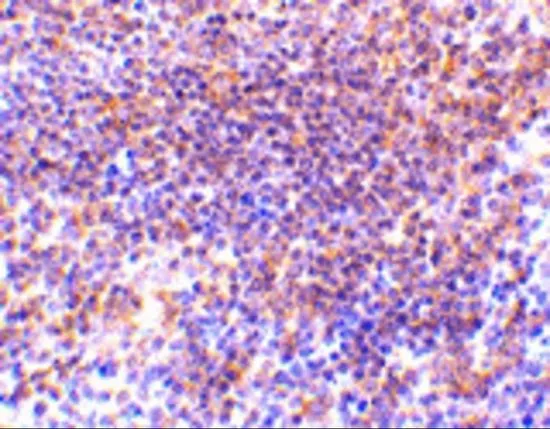
IHC-P analysis of mouse spleen tissue using GTX31743 PAK2 antibody. Working concentration : 10 microg/ml
PAK2 antibody
GTX31743
ApplicationsWestern Blot, ELISA, ImmunoHistoChemistry, ImmunoHistoChemistry Paraffin
Product group Antibodies
ReactivityHuman, Mouse, Rat
TargetPAK2
Overview
- SupplierGeneTex
- Product NamePAK2 antibody
- Delivery Days Customer9
- Application Supplier NoteWB: 0.5 - 2 microg/mL. IHC-P: 10 microg/mL. *Optimal dilutions/concentrations should be determined by the researcher.Not tested in other applications.
- ApplicationsWestern Blot, ELISA, ImmunoHistoChemistry, ImmunoHistoChemistry Paraffin
- CertificationResearch Use Only
- ClonalityPolyclonal
- Concentration1 mg/ml
- ConjugateUnconjugated
- Gene ID5062
- Target namePAK2
- Target descriptionp21 (RAC1) activated kinase 2
- Target synonymsKNO2, PAK65, PAKgamma, serine/threonine-protein kinase PAK 2, PAK-2, S6/H4 kinase, gamma-PAK, p21 (CDKN1A)-activated kinase 2, p21 protein (Cdc42/Rac)-activated kinase 2, p21-activated kinase 2, p58
- HostRabbit
- IsotypeIgG
- Protein IDQ13177
- Protein NameSerine/threonine-protein kinase PAK 2
- Scientific DescriptionThe p21 activated kinases (PAK) are critical effectors that link Rho GTPases to cytoskeleton reorganization and nuclear signaling. The PAK proteins are a family of serine/threonine kinases that serve as targets for the small GTP binding proteins, CDC42 and RAC1, and have been implicated in a wide range of biological activities. The protein encoded by this gene is activated by proteolytic cleavage during caspase-mediated apoptosis, and may play a role in regulating the apoptotic events in the dying cell. [provided by RefSeq, Jul 2008]
- ReactivityHuman, Mouse, Rat
- Storage Instruction-20°C or -80°C,2°C to 8°C
- UNSPSC12352203

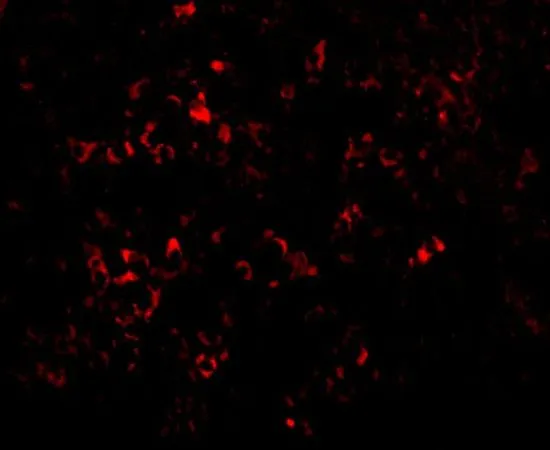
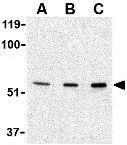

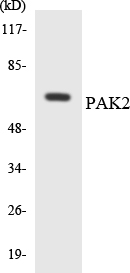
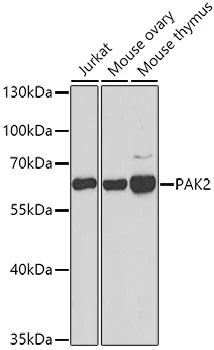
![ICC/IF analysis of HeLa cells using GTX83373 PAK2 antibody [3B5]. Green : PAK2 Blue: DRAQ5 fluorescent DNA dye](https://www.genetex.com/upload/website/prouct_img/normal/GTX83373/GTX83373_20170912_ICCIF_w_23061322_871.webp)
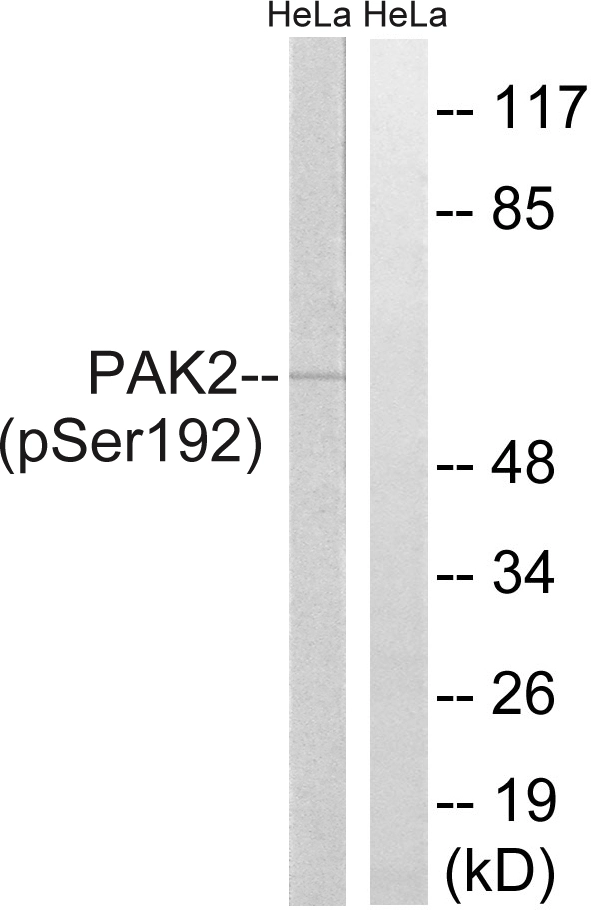
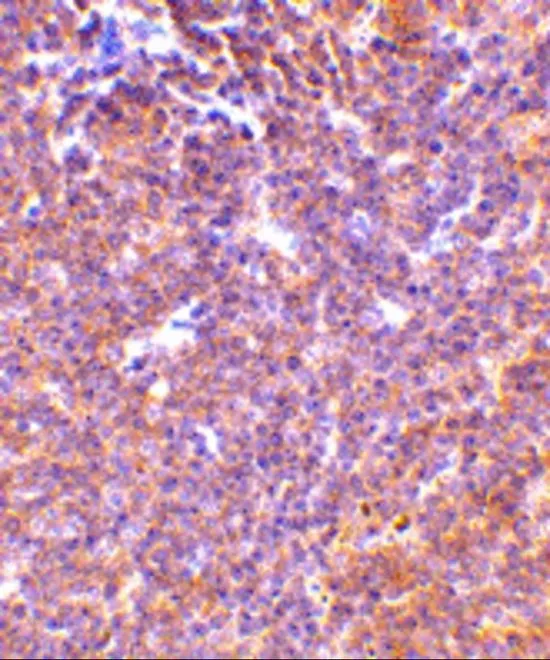
![ICC/IF analysis of C6 cells using GTX02856 PAK2 antibody [GT1259]. Dilution : 1:100 Blue : DAPI for nuclear staining.](https://www.genetex.com/upload/website/prouct_img/normal/GTX02856/A4553_IF_01_(1076030)_w_23053123_844.webp)